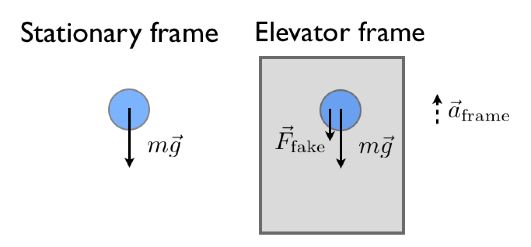Question #11ae5
1 Answer
The time period is less than as when the elevator is at rest.
Explanation:
The time period
where
While deriving this expression it is presumed that the other end of the string is tied to a frame which is stationary and gravity is the only force acting on the bob.
Suppose the other end is tied to ceiling of an elevator which is ascending with a constant acceleration
where

In accelerating frames, like this elevator, laws of Physics are not applicable as we know these are applicable in non-accelerating frames.
There is no direct interaction between the ascending elevator and the bob. With the upward movement of the elevator, the bob 'feels left behind'. Therefore, we need to add fake force as shown in the picture. From Newton's Second Law we know that force is directly proportional to the mass of the object.
Therefore, at the equilibrium state of a pendulum, when the bob is not swinging, we have the equation such that
Both
In general, the effective acceleration
Therefore, the period of the pendulum in an ascending elevator is
Since the denominator has increased, time period becomes less than when the elevator is at rest.
